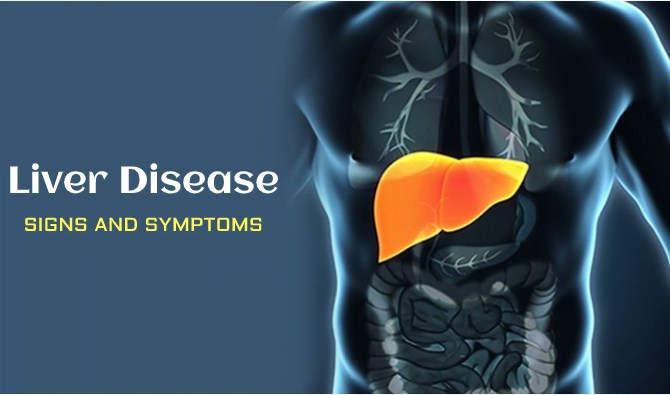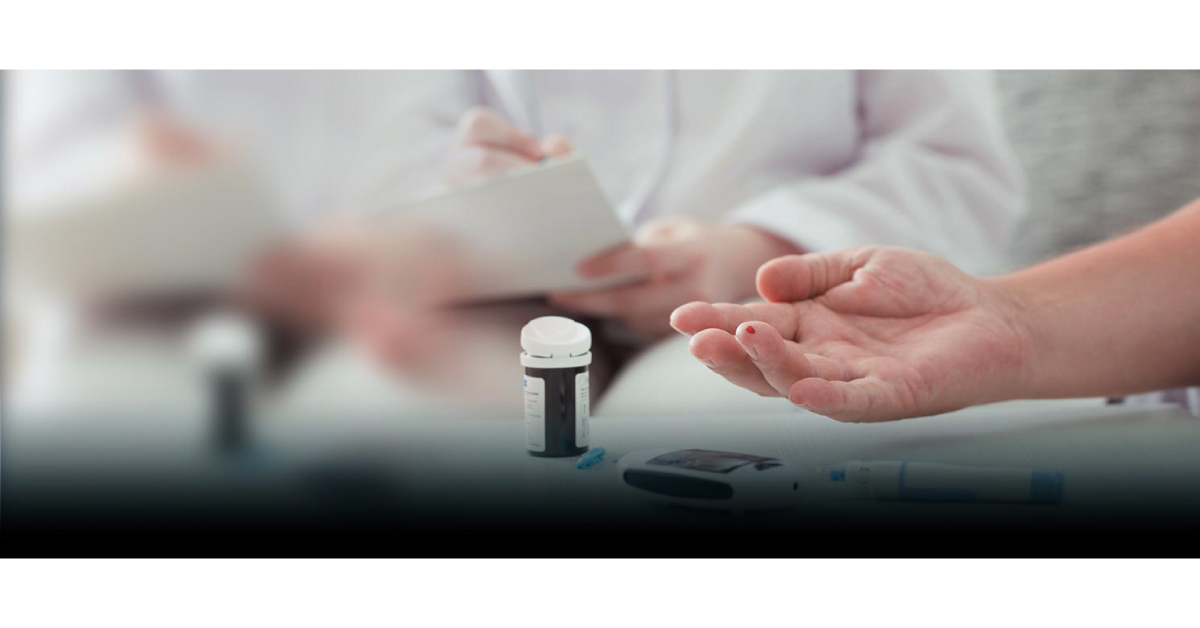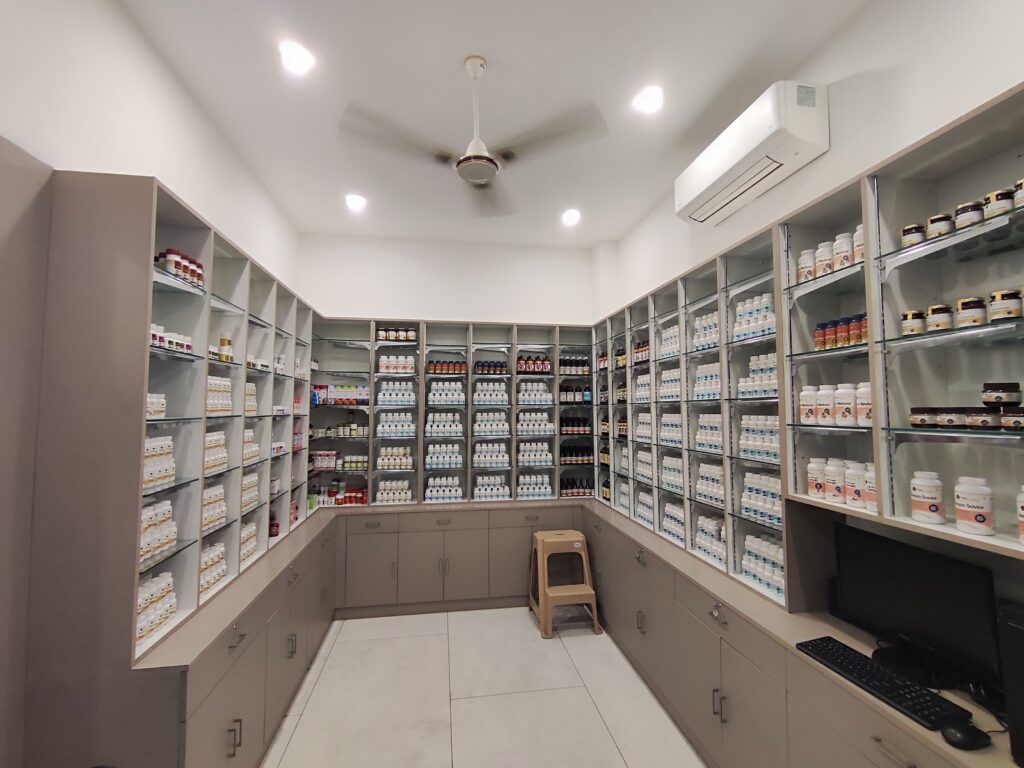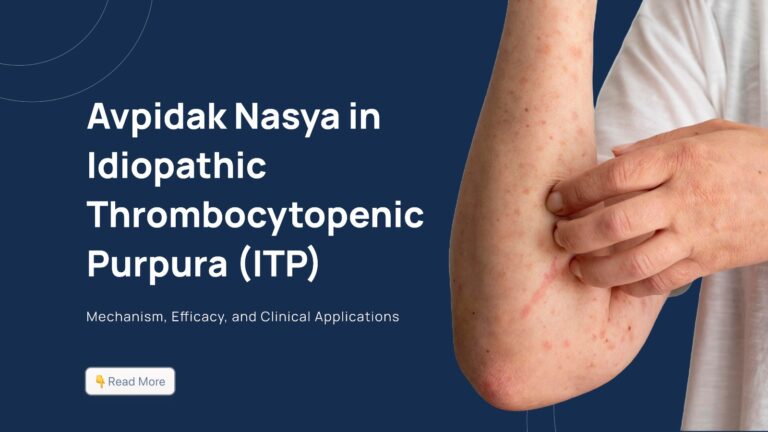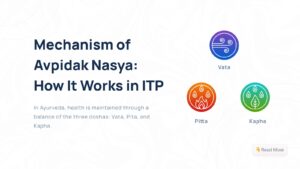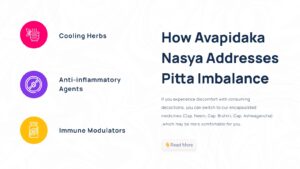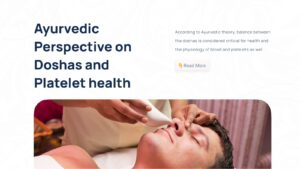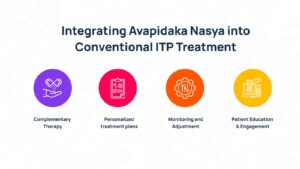Introduction
Idiopathic Thrombocytopenic Purpura (ITP) is an auto-immune disease that occurs when the body produces antibodies that attack its own platelets therefore causing very low levels of platelets in the blood and presenting symptoms including bruising, bleeding, and a heightened risk of hemorrhage. Conventional treatments focus on managing the immune response and platelet levels, but these approaches often come with significant side effects and may not fully address the underlying imbalances.
Avapidaka Nasya is one of the exciting therapies of the Ayurveda medical system which is based on harmonization of mind, body and soul for managing different diseases like ITP. This nasal administration of medicinal substances is meant to modulate doshas and improve other overall body functions. This article explores the Ayurvedic concepts behind Avapidaka Nasya, its mechanisms, efficacy, and how it can be integrated into the management of ITP.
Mechanism of Avpidak Nasya: How It Works in ITP
In Ayurveda, health is maintained through a balance of the three doshas: Vata, Pita, and Kapha. Everyone has their own mix of the five elements, and each dosha controls different bodily functions. Avapidaka Nasya is used to balance the Pitta dosha that is related to inflammation as well as bleeding conditions.
Pitta Dosha and Its Role in ITP
Pitta dosha, composed of fire and water elements, governs metabolism, transformation, and heat in the body. When Pitta becomes imbalanced, it can lead to excessive heat and inflammation, which are central features of ITP. Symptoms like bleeding and bruising may be associated with aggravated Pitta, which interferes with the normal function of blood and platelets.
How Avapidaka Nasya Addresses Pitta Imbalance
Avapidaka Nasya employs specific plant extracts that are cooling and astringent in nature to help control the excessive Pitta. When inhaled through the nostrils, these substances are directly assimilated into the blood and thus have systemic impact.
The key components in Avapidaka Nasya include:
Cooling Herbs: These herbs assist in bringing down the Pitta and the associated factors of heat and inflammation. Some common examples are Sandalwood (Chandana) and Licorice (Yashtimadhu) and are believed to have a calming effect.
Anti-inflammatory Agents: ingredients like Turmeric (Haridra) and Neem (Nimba) aid in checking inflammation and other natural healing processes.
Immune Modulators: Ashwagandha (Withania somnifera) and Brahmi (Bacopa monnieri) have anti-inflammatory properties, which may decrease the attack on platelets by the immune system.
If you experience discomfort with consuming decoctions, you can switch to our encapsulated medicines(Cap. Neem, Cap. Brahmi, Cap. Ashwagandha), which may be more comfortable for you.
Direct Nasal Administration and Systemic Effects
The nasal route of administration allows for rapid absorption of medicinal agents, providing quick access to the systemic circulation. This direct method of delivery can enhance the therapeutic effects of the herbs, promoting better balance and health throughout the body. Additionally, Nasya therapy may help improve local circulation in the head and neck region, which can have positive effects on overall well-being.
Detoxification and Circulation Enhancement
In Ayurveda, Nasya is believed to aid in the body’s natural detoxification processes by clearing toxins and enhancing circulation. The herbal formulations used in Avapidaka Nasya may help to cleanse and rejuvenate the body, supporting optimal blood quality and platelet function.
Clinical Efficacy of Avapidaka Nasya
Though direct research on Avapidaka Nasya in relation to ITP is sparse, one can gather information regarding the effectiveness of Avapidaka Nasya for other ailments with similar symptoms.
Evidence from Case Studies and Observational Reports
Limited historical and anecdotal literature shows that Nasya therapy was helpful in treating diseases where patients suffer from symptoms like inflammation and bleeding. For instance, patients with different bleeding disorders and inflammatory diseases have described the effectiveness of Nasya therapy in lessening the symptoms. This positive feedback strengthens the likelihood of Avapidaka Nasya’s effectiveness in treating ITP, although direct research is limited.
Supporting Conventional Treatments
Thus, Avapidaka Nasya cannot be considered as a substitute for standard treatments like corticosteroids or immunosuppressive agents but it may act as an additional treatment. Thus, the remedies of Nasya, which influence dosha and improve health, can help to increase the efficiency of the main types of treatment and ease the condition of patients.
Potential Benefits and Limitations
The potential benefits of Avapidaka Nasya include reduced inflammation, improved immune function, and enhanced overall well-being. However, it is important to recognize that Nasya therapy is best used as part of a comprehensive treatment plan. Its effectiveness may vary depending on individual responses and the severity of the condition.
Ayurvedic Perspective on Doshas and Platelet health
According to Ayurvedic theory, balance between the doshas is considered critical for health and the physiology of blood and platelets as well.
Pitta Imbalance and Platelet Health
According to Ayurveda, high Pitta dosha leads to situations of heat and inflammation, bleeding disorders etc. Through regulation of Pitta, Avapidaka Nasya is helpful in minimizing such symptoms and improving proper blood function. The therapy of total body metabolism contributes to maintaining the stability of the internal environment by timely check and balance the proper platelet functioning to decrease bleeding tendency.
Holistic Health Approach
Ayurveda has a primary approach of balancing health by focusing not only on bodily ailments but also psychological and emotional issues. Avapidaka Nasya can also be seen as supporting this overall approach since it has the specific intention of balancing the three doshas, improving the general health, and providing well-being. Such an approach is highly relevant when dealing with ITP and other illnesses that impact various aspects of existence.
Integrating Avapidaka Nasya into Conventional ITP Treatment
To ensure that the benefits derived from the use of Avapidaka Nasya in the management of ITP are optimal, it should be properly incorporated with the conventional treatments.
-
Complementary therapy:
Avapidaka Nasya should be used as a complementary therapy rather than a replacement for conventional ITP treatments. Coordination with healthcare providers ensures that Nasya therapy enhances rather than interferes with other treatments.
-
Personalized treatment plans:
According to Ayurveda, diagnosis and treatment are individualized, depending on the patient’s dosha and the nature of disease. To ensure that the therapy is most effective, it is better to consult with an Ayurvedic practitioner regarding the individual Nasya treatment plan.
-
Monitoring and Adjustment:
Avapidaka Nasya may cause subtle changes in the patient’s condition, therefore, constant evaluations of the therapeutic outcomes are encouraged. Additional changes in the treatment plan may be needed depending on the patients’ response and their integration with other therapeutic interventions.
-
Patient Education and Engagement
Educating patients about Avapidaka Nasya and its benefits is crucial for successful integration into their treatment plan. Engaging patients in their care helps ensure adherence and enhances overall outcomes.
Conclusion:
Avapidaka Nasya offers a unique and complementary approach to managing Idiopathic Thrombocytopenic Purpura (ITP) from an Ayurvedic perspective. By addressing Pitta dosha imbalances and supporting systemic health, this nasal therapy may provide additional benefits alongside conventional treatments. While further research is needed to establish its efficacy specifically for ITP, integrating Avapidaka Nasya with standard therapies could enhance patient care and offer a more holistic approach to managing this complex condition. Embracing both Ayurvedic and conventional methods may lead to more comprehensive and effective management strategies for ITP.



